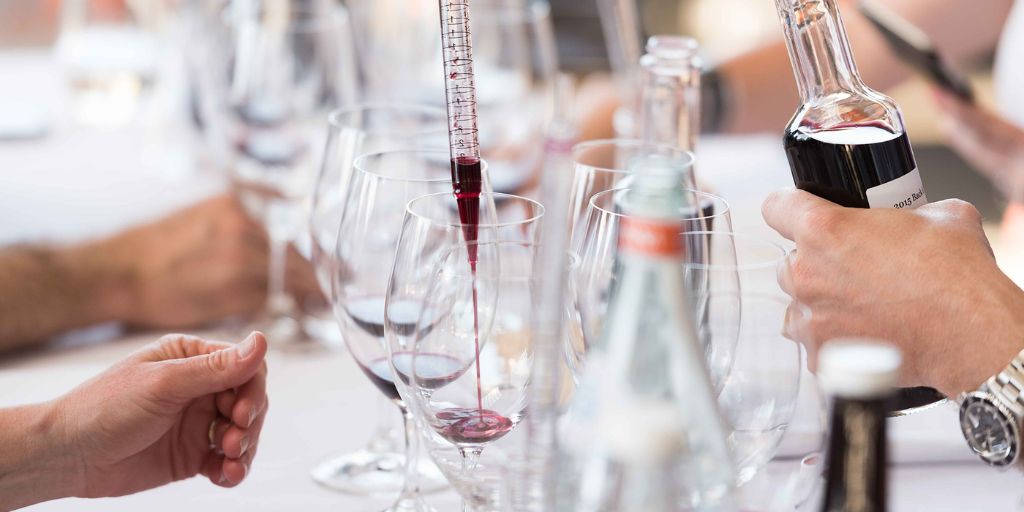Wine blending is a centuries-old technique that has helped shape some of the world’s most iconic bottles. While the idea of mixing different wines might sound simple, the art of blending is a complex process that requires a deep understanding of grape characteristics, balance, and harmony.
Whether you’re a casual wine enthusiast or looking to deepen your appreciation, understanding the basics of wine blending can unlock a new layer of insight into what’s in your glass.
In this article, we’ll explore why winemakers blend wines, how the process works, what grape varieties are commonly used, and how blending affects the final product.
What Is Wine Blending?
Wine blending is the process of combining two or more different wines to create a final product with specific desired characteristics. These blends can be made from different grape varieties, vineyard blocks, vintages, or even barrels of the same wine.
The main goal of blending is to enhance quality—balancing acidity, tannins, body, aroma, and flavor. A successful blend offers more complexity and harmony than any single component could on its own.
Why Do Winemakers Blend Wines?
There are several reasons why blending is such a critical part of the winemaking process:
1. Improved Balance
Each grape variety brings different qualities to the table—Cabernet Sauvignon may offer structure and tannin, while Merlot contributes softness and fruitiness. A blend can create a more balanced wine where no single element overwhelms the palate.
2. Consistency Across Vintages
Mother Nature is unpredictable. In years when one grape variety underperforms due to weather or disease, winemakers can use blending to maintain consistency in their flagship wines.
3. Enhanced Complexity
A single-varietal wine might showcase straightforward flavors, but a blend can offer layers of aroma and taste that unfold over time, from berry and spice to earth and floral notes.
4. Style Customization
Blending allows winemakers to shape the house style they’re known for—whether it’s bold and structured, smooth and mellow, or bright and aromatic.
Common Types of Wine Blends
Wine blending isn’t limited to one part of the world. While France has made this art famous, many countries use blending as a signature practice. Here are some of the most recognized blended wine styles:
1. Bordeaux Blend
Perhaps the most famous red blend in the world, Bordeaux blends typically feature:
-
Cabernet Sauvignon (structure, tannins)
-
Merlot (roundness, fruit)
-
Cabernet Franc (floral notes, acidity)
-
Sometimes Petit Verdot, Malbec, and Carménère
These blends are structured, age-worthy, and complex.
2. Rhône Blend
Originating from France’s Rhône Valley, these red blends often include:
-
Grenache (fruitiness, warmth)
-
Syrah (pepper, structure)
-
Mourvèdre (earth, tannins)
Known as GSM blends (Grenache-Syrah-Mourvèdre), they are popular in both Old and New World regions.

3. Champagne
Blending is fundamental in Champagne. The most common mix includes:
-
Chardonnay (freshness, elegance)
-
Pinot Noir (body, structure)
-
Pinot Meunier (fruit, roundness)
These grapes are blended not only across varietals but also from multiple vintages to maintain a house style.
4. Super Tuscan
These Italian wines often blend native Sangiovese with international varieties like Cabernet Sauvignon or Merlot, breaking traditional DOC regulations but achieving exceptional quality.
5. White Blends
Popular white blends include:
-
White Bordeaux: Sauvignon Blanc and Sémillon
-
Alsace blends: Often include Riesling, Pinot Gris, Gewürztraminer, and Muscat
-
Rhone white blends: Typically feature Viognier, Roussanne, and Marsanne
These blends balance citrus, floral, and mineral tones with varying textures.
The Blending Process
Blending is both a science and an art. Here’s how winemakers approach it:
1. Component Tasting
Before anything is blended, winemakers taste different lots (sections of the vineyard or separate fermentation tanks) to understand their characteristics.
2. Trial and Error
Small trial blends are created and tasted to test how different ratios interact. It may take dozens of iterations to arrive at the perfect mix.
3. Lab Analysis
While taste drives most decisions, labs also measure alcohol, acidity, pH, and other chemical properties to ensure stability and balance.
4. Final Blending
Once the right formula is selected, winemakers scale the trial up to full volume, blending tanks or barrels together before bottling.
5. Aging (Optional)
Some blends are aged further after blending to allow the components to integrate. Others are blended just before bottling.
Challenges in Wine Blending
Blending is not without its difficulties. Some challenges include:
-
Incompatibility: Some wines simply don’t work well together, even if great on their own.
-
Loss of identity: Over-blending can result in a wine that’s flat or generic.
-
Vintage variation: Grapes from different years may clash unless expertly handled.
-
Consumer expectations: Well-known blends must meet stylistic standards or risk disappointing loyal drinkers.
Blending in Home Winemaking
If you make wine at home or enjoy experimenting, blending can be a fun way to tailor wines to your personal taste. Some tips:
-
Start with wines that have contrasting qualities (e.g., a high-acid white and a full-bodied one).
-
Blend small amounts (like 50 ml) and take notes.
-
Try different ratios—70/30, 60/40, 50/50—and compare.
-
Let the blend sit for a day or two and taste again—it can evolve.
Final Thoughts
Wine blending is a foundational practice that plays a huge role in how wines taste, age, and are experienced by drinkers. Whether it’s a powerful Bordeaux, a graceful Champagne, or an adventurous New World GSM, blending brings out the best qualities of each grape and adds harmony to the final product.
Understanding the basics of blending not only deepens your wine knowledge but can also enhance your enjoyment the next time you sip a beautifully balanced bottle. Next time you’re wine shopping, pay attention to the blend on the label—you may discover a new favorite by looking beyond single-varietal wines.


